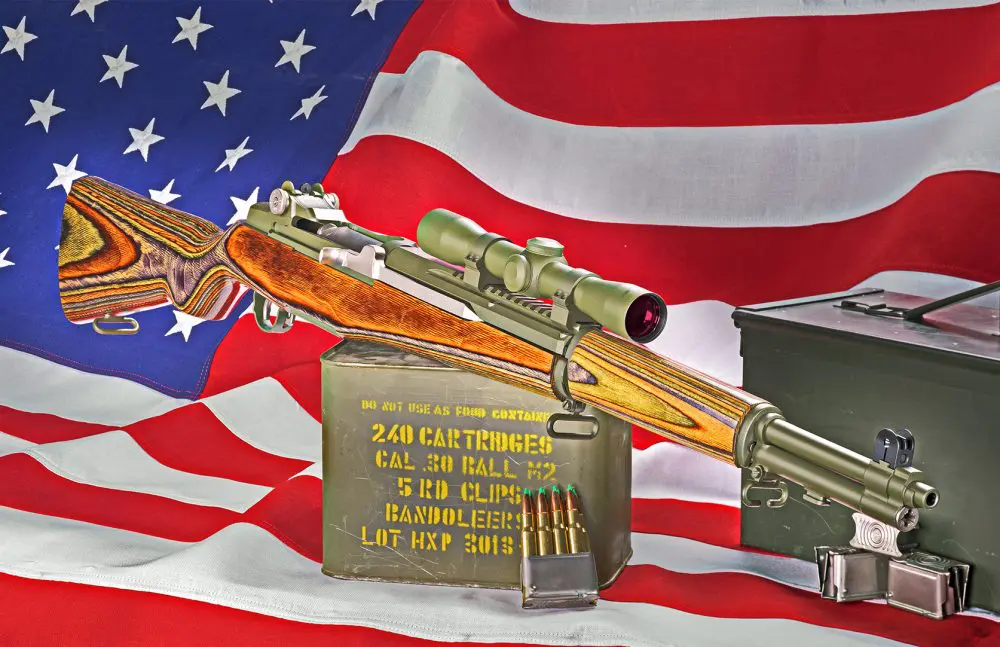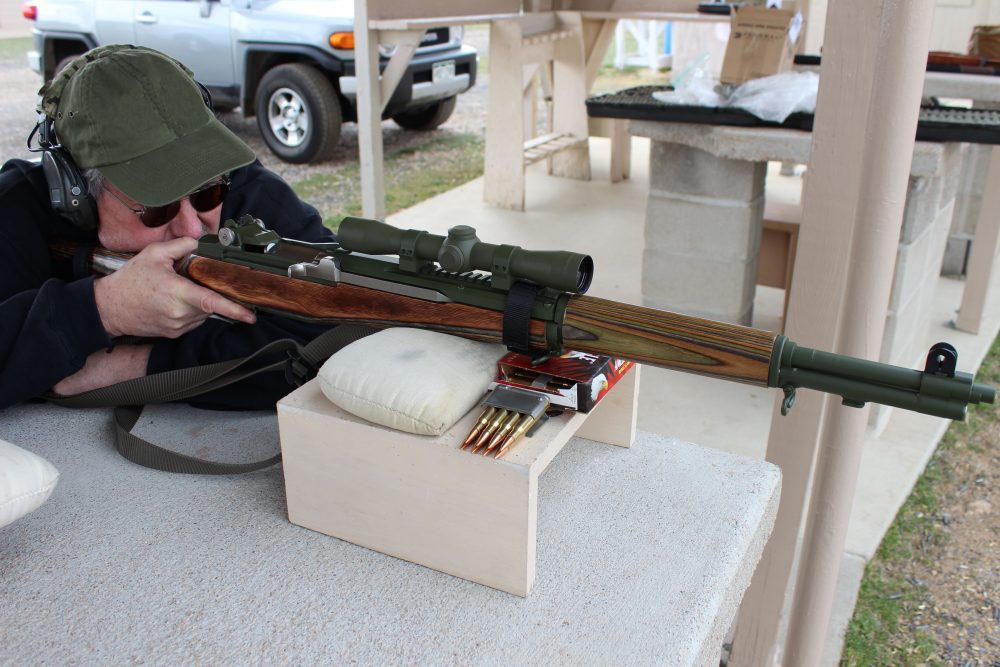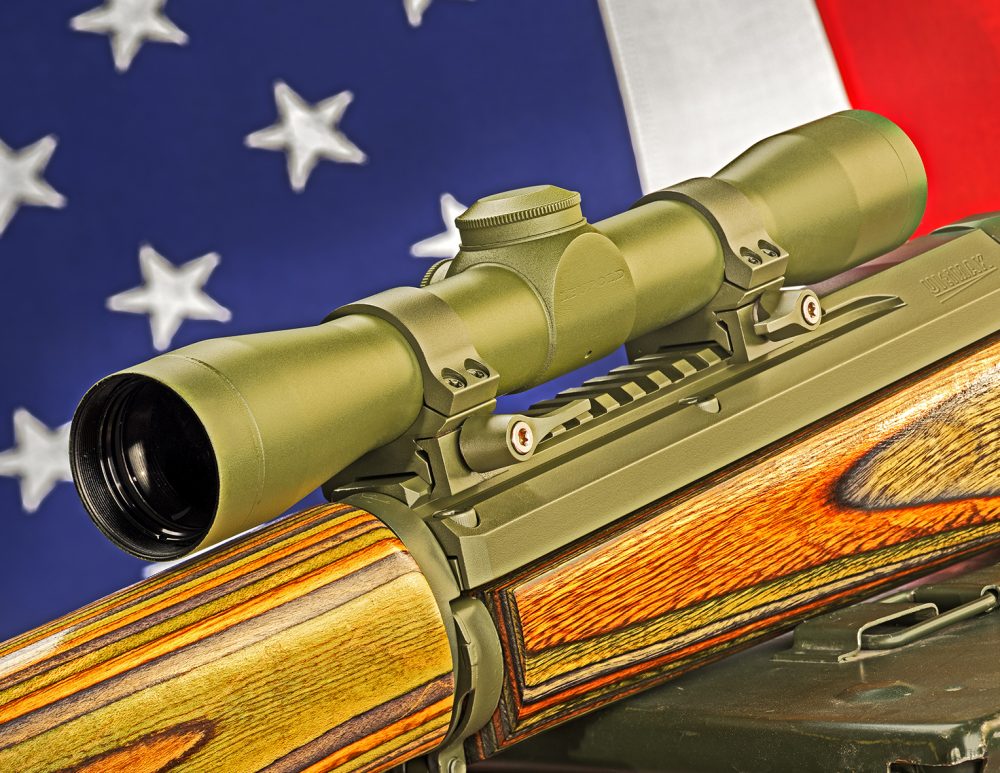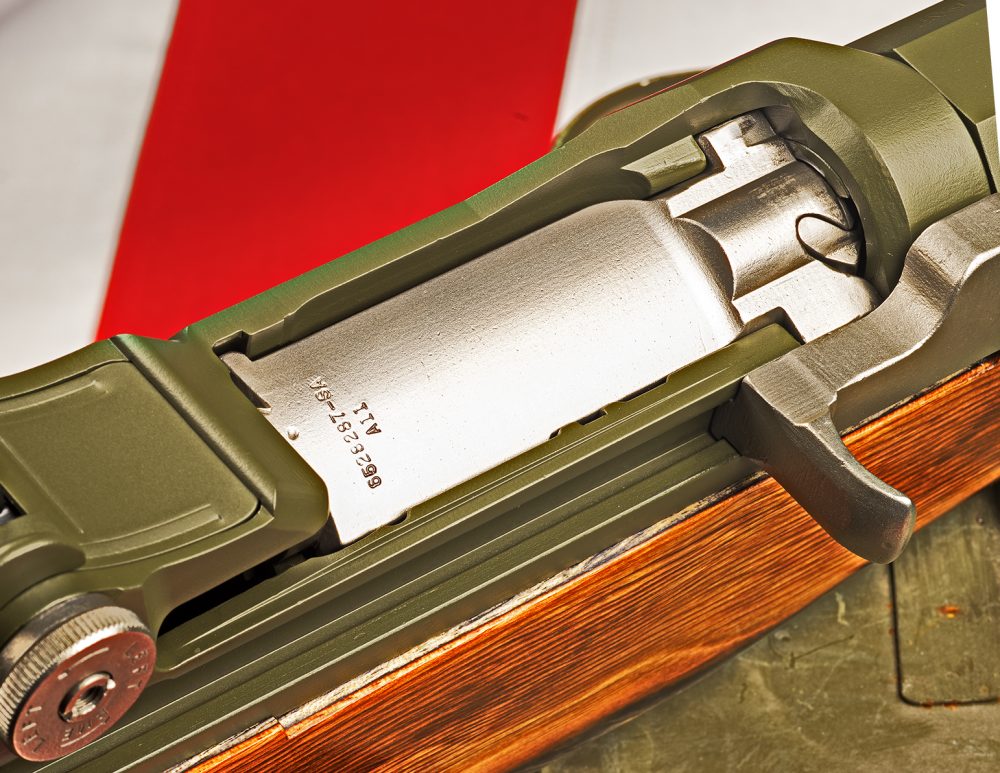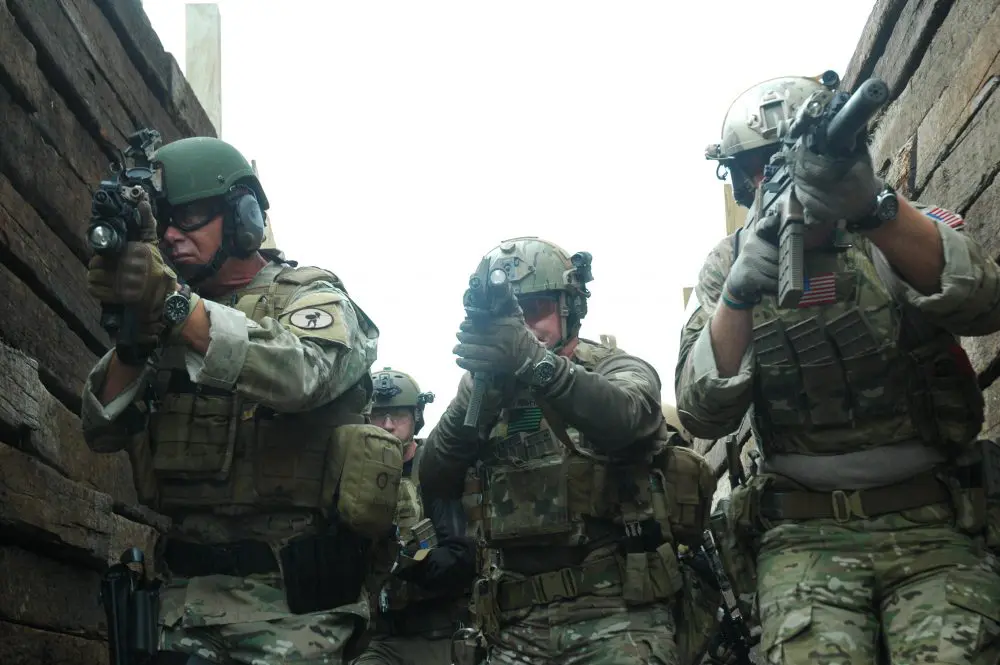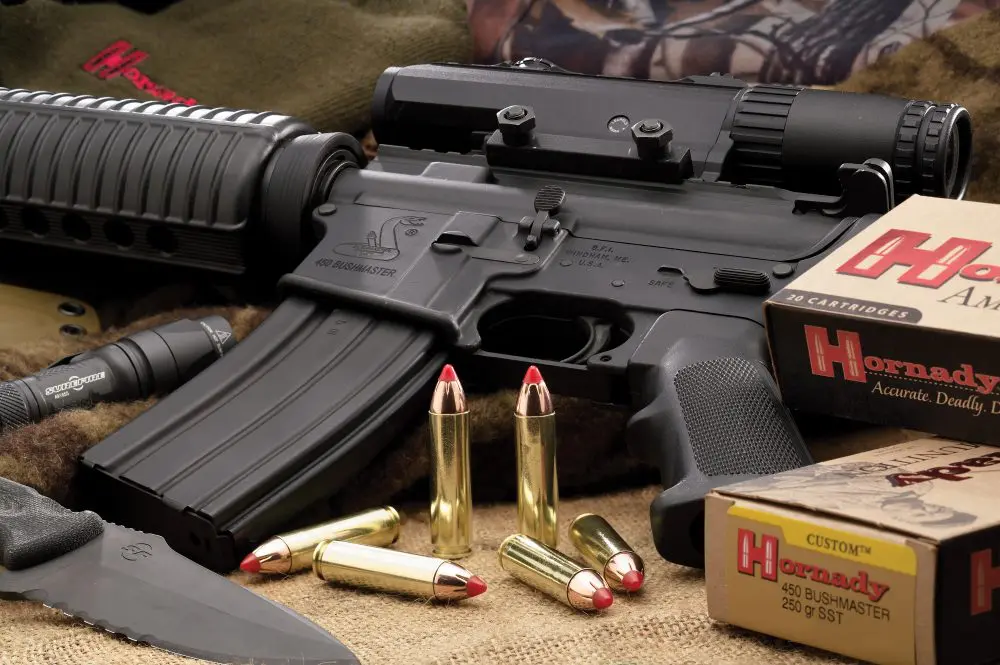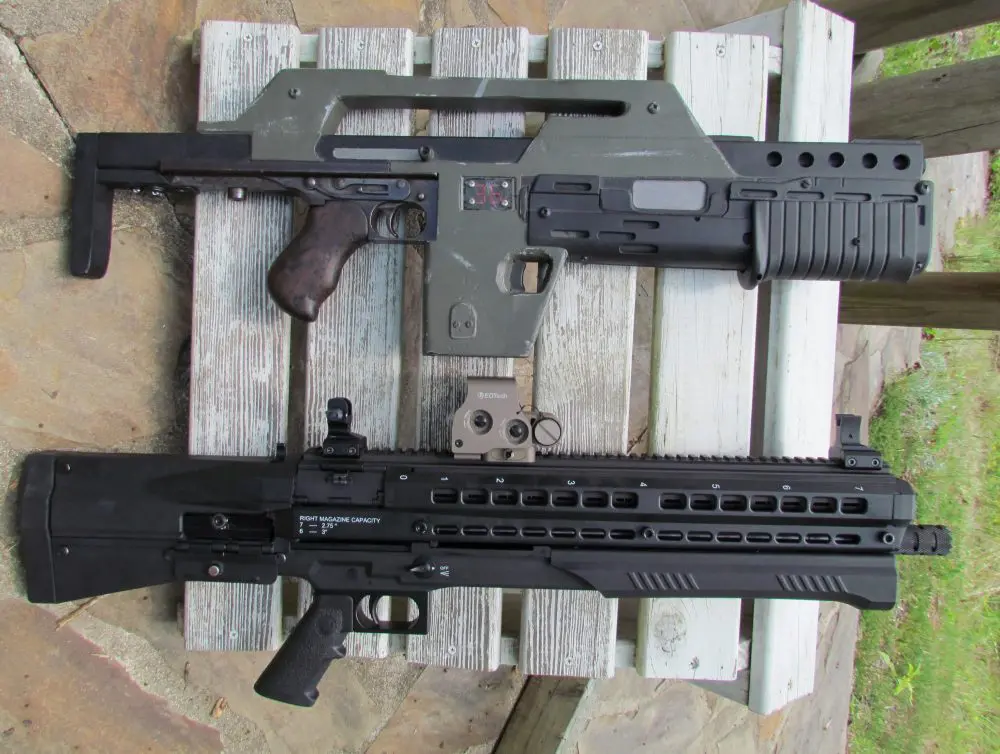I hate political correctness. It’s a term used by leftists to change a society’s culture by creating guilt. I won’t waste ink here by reviewing what a disastrous year 2013 was for the Second Amendment, except to say that laws were passed by politicians with no technical understanding of the objects they voted to ban. Their motivation stemmed from a desire to be politically correct. Terms like “high capacity,” “clip” and “assault weapon” set the tone of the legislation.
Gun owners can play that game. America already has a politically correct rifle. It’s the venerable World War II-era M1 Garand battle rifle.
The M1 has no 30-round magazine, just an eight-round en bloc clip that is inserted into an internal magazine. No scary tactical black plastic furniture and no pistol grip, just a simple wooden stock that doubles as an impact weapon. The M1 doesn’t even fire one of those frightening military cartridges like the 5.56mm NATO or the 7.62x39mm Soviet rounds that all good liberals believe were only designed to kill people in schools and movie theaters. It fires one of the most popular hunting cartridges ever, the .30-06 Springfield, and has been putting meat on the table since 1906.
The M1 Garand seems like a good liberal’s dream rifle, yet the current Administration issued an executive order in 2013 that bans the importation of curio and relic firearms such as the Garand that were originally given to America’s allies overseas more than 50 years ago. It looks like the guns that American taxpayers funded won’t be coming home any time soon.
But although scarce, used M1s are still available through the usual sources such as the Director of Civilian Marksmanship, gun shows and online brokers.
M1 is cumbersome by today’s standards, but don’t get in front of one. Four-pouch ammo belt is by Olongapo Outfitters.
Table of Contents
BATTLE RIFLE
Historically, the Garand is a battle rifle because it predates the development of the assault rifle concept as illustrated in such designs as the German StG44, ArmaLite M16, and AK-47.
Technically, the Garand is a battle rifle because it fires a full-power cartridge in semi-auto mode. The term “assault rifle” is generally used to define military rifles in their full-size configuration, such as the M16 and AK-47, which fire an intermediate-power cartridge and can switch between full-auto and semi-auto. Carbines like the M4 are typically included in this designation. Any copy that fires only in semi-auto mode and is sold to the civilian market is simply a semi-auto copy of the military version. Politicians, take note.
While I shot mainly from the bench, most GIs shot while advancing on the enemy.
GARAND’S DOWNSIDES
The Garand is not without certain drawbacks. It’s a 9.5-pound battle rifle that is 43.6 inches long. I remember watching three young women shooting borrowed Garands at a local club’s match rifle clinic. They did very well in seated and prone positions, but they didn’t have to carry the gun all day and then assault a Pacific beachhead.
The size and weight of the rifle may be negative factors for some people, and there are reasons why the Garand was eventually replaced by other designs. As the U.S. military became more mechanized, standardization of a shorter, lighter assault rifle concept became even more attractive.
One perceived drawback of the Garand in a changing world was the eight-round clip, which cannot be topped off during a lull in fighting as can a typical box magazine that has a spring and follower. Even the 1903 Springfield bolt-action rifle that the Garand replaced had the capability to be reloaded with a five-round stripper clip.
Typically, troops who had fired four or five rounds from the Garand and who had a lull in the battle would dump the partial clip and insert a fresh one, often leaving live rounds in the dirt. Better to waste a few cartridges than try to assault an enemy machine gun nest with only three rounds in the gun.
Many M1 purists preserve and shoot their Garands in the original military condition at club matches and the National matches at Camp Perry at ranges of 200, 300 and 600 yards, and they do well with them. But there is a case to be made for applying some 21st century upgrades to the tough old warrior that General Patton praised as the “greatest battle implement ever devised.”
Leupold FX-II Scout IER 2.5X28mm scope with ROBAR Polymax OD Green, riding in Leupold QRW Low mounts on an Ultimak M1 Garand Forward Optic Mount with ROBAR Poly-T2 OD Green finish.
ROBAR GARAND CUSTOMIZATION
The innovative minds at The Robar Companies (ROBAR) in Phoenix, Arizona have taken the basic Garand and applied some sensible customization to bring this decades-old rifle into the 21st century and ensure it will be able to function effectively for future generations of defenders of freedom.
ROBAR can apply various levels of customization to a customer-supplied rifle, including the following:
-
- Rack Grade Enhancement Package, $995: Inspect the rifle. Metal refinish includes NP3 plating ten M1 clips. Fit new walnut stock and return old stock. Trigger clean up. Remove all noticeable creep but maintain a crisp military two-stage trigger pull and trigger weight of at least 4.5 pounds. Supply and install Ultimak Scout Mount.
- Field Grade Enhancement Package, $1495: Includes Rack Grade Enhancement Package plus supply and install new barrel, headspace and time. Finish reaming the chamber to give proper headspace within military specifications.
- Service Grade Enhancement Package, $1895: Includes Rack Grade Enhancement Package and Field Grade Enhancement Package plus supply and install new op rod.
Other options are available. Contact ROBAR for a complete list.
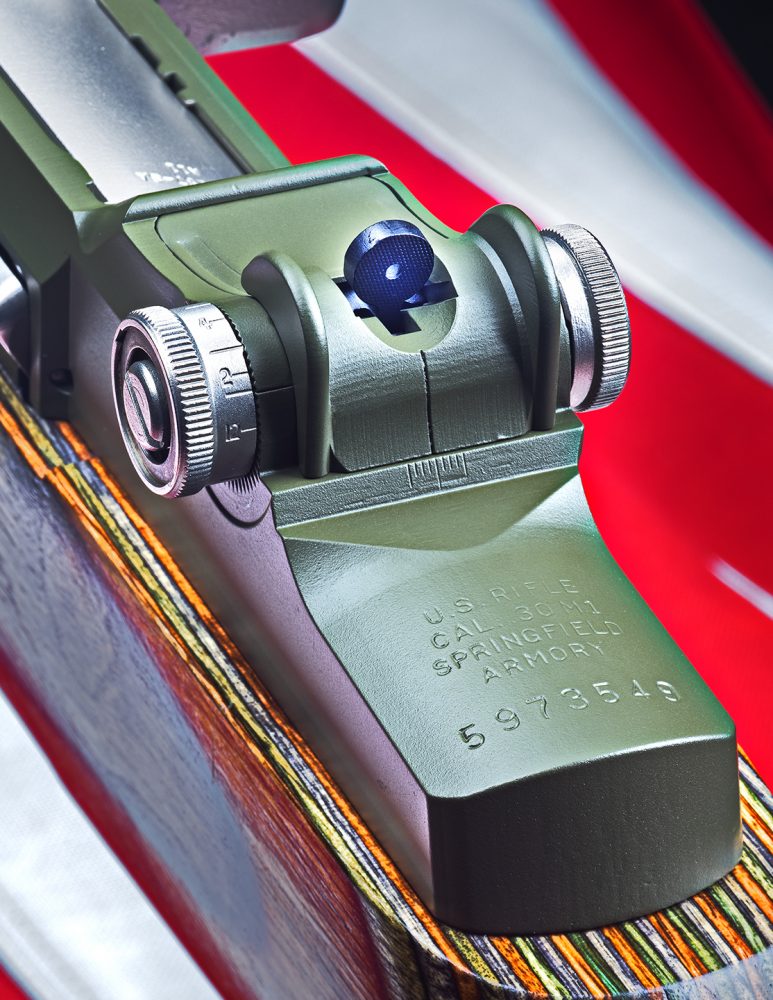
SHOOTING THE ROBAR GARAND
Most of the external surfaces are finished in ROBAR’s Poly-T2, a PTFE-based modified epoxy coating, in OD Green. Internals are coated in ROBAR’s NP3, an electroless nickel-based finish that includes Teflon. This makes for a slick, easy-to-clean surface without using a liquid lube.
My test sample came with a Leupold FX-II Scout IER 2.5x28mm scope, also coated with OD Poly-T2 and forward mounted on an Ultimak rail. Included were a Giles Tactical sling from The Wilderness and ten clips plated with NP3, two of which were five-round hunting clips.
I shot the Garand using both military surplus ammunition and Federal 150-grain full metal jacket. Federal also makes a specific “Garand” load, but it was out of stock at the time of testing. Both loads grouped well.
The forward-mounted rail allows the shooter a lot of choices in optics, and the Scout scope enabled fast target acquisition and accurate shooting, but it does add 12 ounces to the gun and shifts the center of gravity farther forward.
In separate testing, I found that an Aimpoint Micro H-1, which weighs just three ounces, put the center of gravity where I prefer it. Of course, the standard M1 iron sights still work just fine. The military trigger has a short take-up and crisp, clean release.
Switching sights provided an opportunity to test a nifty little multi-purpose wrench called the Combat Optic Tool (COT) designed by ROBAR’s general manager, Lt. Col. Freddie Blish (USMC Ret.) and available for $14.95 from ROBAR. The COT can adjust various popular sights including Aimpoint T-1 and M series, EOTech, Trijicon ACOG and RMR systems, plus the mounting nuts on LaRue Tactical, GDI and ADM mounts. It worked well on my Aimpoint and even includes a bottle opener! Once a Marine, always a Marine.
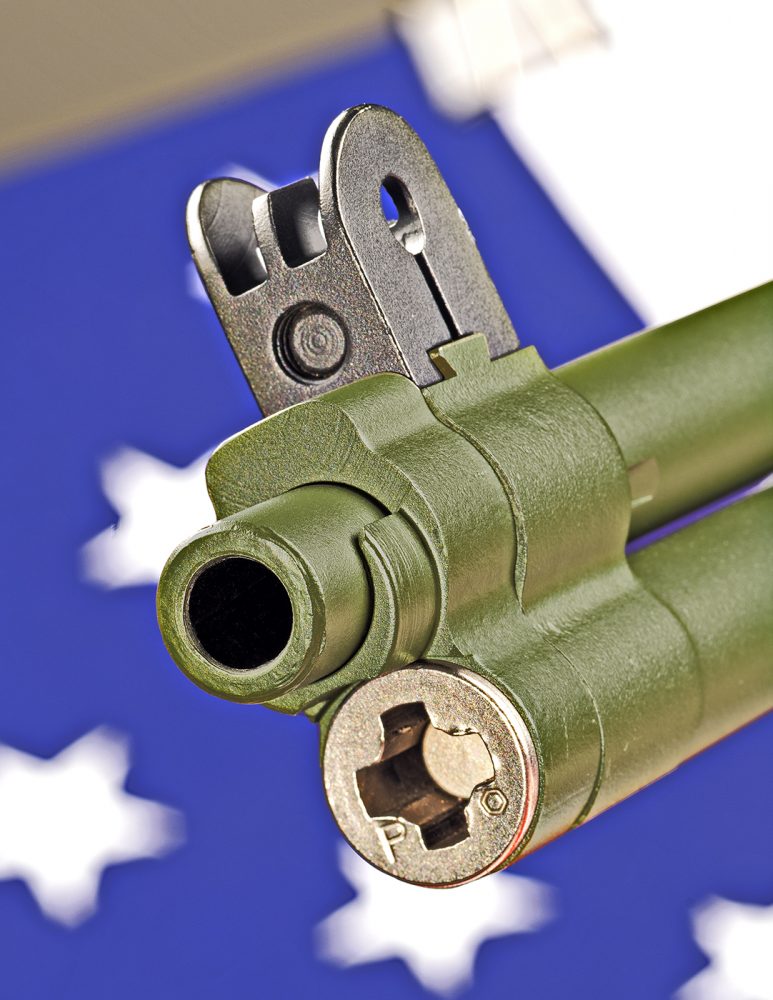
.30-06 AND .308 AMMUNITION
The .30-06 cartridge was developed from the U.S. Cartridge, caliber .30, Model of 1903 (.30-03), which was loaded with a 220-grain round-nose bullet. In an effort to keep up with the Germans, who had developed the pointed spitzer bullet at about the same time, the .30-03 cartridge was shortened by 0.07 inch and loaded with a 150-grain pointed flat-base bullet.
This was not a very successful design, so in World War I, the military round was improved with a 172-grain jacketed boat-tail bullet and designated .30M1 for use in the Springfield bolt-action service rifle. By World War II, the M1 Garand was in production and chambered for a .30-06 cartridge that fired a bullet closer to the original 1906 load. This WWII Garand cartridge has the military designation .30M2.
WWII firmly established semi- and full-auto rifles and light machine guns in the arsenals of leading nations. The .30-06 cartridge was found to be unnecessarily long for military autoloading actions, and the old .30-06 case (7.62x63mm) was shortened to 51mm. In armies around the world, it was designated the 7.62x51mm or 7.62 NATO round and is loaded with a boat-tail jacketed bullet weighing 147 grains. In the civilian world, it became the .308 Winchester. The 7.62/.308 cartridge has very close velocity and energy to its older brother, the .30-06.
The .30-06 Springfield cartridge has been a tried and tested means of putting meat on the table and America’s enemies in the ground for more than a century. For many people, perceived recoil in a bolt-action rifle runs from manageable to brisk. In a semi-auto such as the Garand, it’s less noticeable.
The Garand was never intended to shoot commercial hunting ammunition. Many commercial .30-06 loads use powders that can produce pressures and volumes of gas much higher than the military surplus loads and can damage the operating rod, bolt and receiver. Caution is advised.
Garand shooters who are not reloaders should stick with surplus military rounds such as M2 and M72 Match, manufactured decades ago by such U.S. arsenals as Lake City. Federal American Eagle produces a .30-06 load specifically designed for use in Garands.
Years ago, I asked WWII Marine and combat veteran Colonel Jeff Cooper about the effectiveness of the WWII-era .30-06 military cartridge compared to the current 5.56mm NATO round. Not surprisingly, he told me something I hadn’t even considered. The .30-06 round is much better at destroying materiel such as unarmored vehicles, enemy equipment and structures than the current 5.56 NATO cartridge. Back in the Colonel’s day, they couldn’t call in a million-dollar smart bomb to destroy a hut. Instead, they just lit up the target with their Garands until it fell apart or the occupants resembled Swiss cheese.
M1 Garand receiver finished in ROBAR Poly-T2 OD Green. Bolt and operating rod are plated with ROBAR NP3.
Editor’s Note: The official designation of the rifle was United States Rifle, Caliber .30, M1, later simply called Rifle, Caliber .30, M1. The “Garand” used in popular vernacular refers to the rifle’s inventor, John C. Garand. For the purposes of this article, we will refer to it simply as “M1” or “Garand.”
READING MATERIAL
Shooters who are new to the Garand might consider picking up a copy of the Army Field Manual FM 23-5 U.S. Rifle Caliber .30 M1 for the original skinny on loading, cleaning and disassembly. The Fighting Garand Owner’s Manual, edited by Nolan Wilson, includes a lot, if not all, of the same material but with additional historical background.
When John C. Garand designed and developed the M1 rifle between the two world wars, I doubt he could have foreseen a time when leftist ideology and political correctness would infringe upon the right to keep and bear arms, but I bet he’d be delighted to know that owning and customizing his rifle have become two more ways to celebrate the freedom that many generations of Americans have fought to preserve.
SOURCES:
The Robar Companies, Inc.
(623) 581-2648
www.robarguns.com
Federal Premium Ammunition
(800) 379-1732
www.federalpremium.com
Leupold & Stevens, Inc.
(503) 526-1400
www.leupold.com
Olongapo Outfitters
www.olongapooutfitters.com
Wilderness Tactical Products, LLC
(800) 775-5650
www.thewilderness.com
